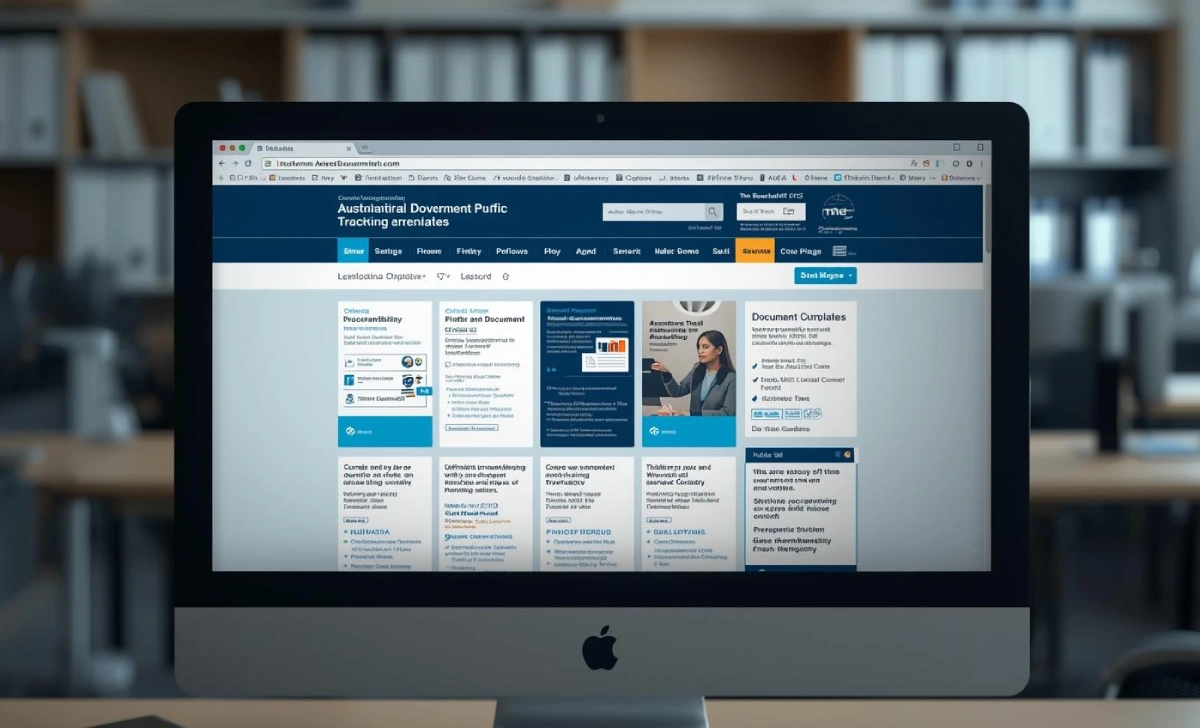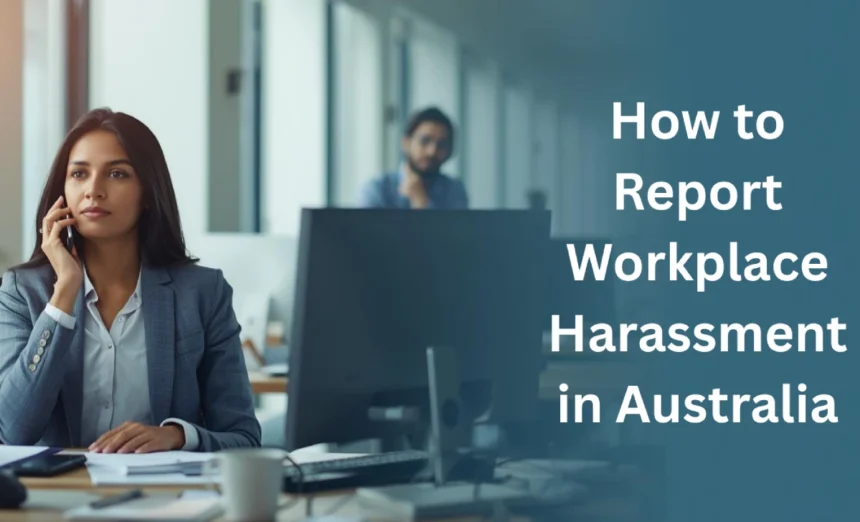Facing harassment at work leaves you feeling vulnerable and unsure who to turn to. You need clear steps, proper templates, and the right evidence to make your complaint stick. This comprehensive Australian guide walks you through exactly how to report workplace harassment in Australia, from internal complaints to external regulators, plus what happens after you hit “send. 
- What Counts as Workplace Harassment in Australia?
- Immediate Steps to Stay Safe and Document the Incident
- How to Raise an Internal Complaint (Step-by-Step)
- How to Report Workplace Harassment in Australia — External Bodies & When to Escalate
- What Evidence to Gather (and How to Keep It Safe)
- What Happens After a Report — Investigations, Outcomes and Protections
- Special Situations & Practical Tips
- Take Action: You Have Options and Support
What Counts as Workplace Harassment in Australia?
Workplace harassment encompasses repeated unwelcome behaviour that creates a hostile work environment. Under Australian law, this includes bullying (aggressive or intimidating conduct), sexual harassment (unwanted sexual advances or comments), and discriminatory behaviour based on protected attributes like gender, race, or disability.
The National Employment Standards (NES) and state anti-discrimination legislation provide the legal framework. Fair Work Act 2009 specifically addresses workplace bullying, while the Sex Discrimination Act 1984 covers sexual harassment. Your employer also has health and safety duties under Work Health and Safety (WHS) laws to maintain a safe workplace.
Example: Sarah, a marketing coordinator in Sydney, experienced repeated inappropriate comments about her appearance from her supervisor. When she asked him to stop, he escalated to sending suggestive texts after hours. This pattern of behaviour constitutes sexual harassment under Australian law, unlike a single inappropriate comment, which might warrant a conversation but wouldn’t typically trigger formal complaint processes.
The key difference between poor management and unlawful harassment lies in the intent, frequency, and impact. Legitimate performance management delivered respectfully doesn’t constitute harassment, even if it feels uncomfortable.
Harassment vs Bullying vs Sexual Harassment:
• Harassment: Repeated unwelcome behaviour creating a hostile environment
• Bullying: Aggressive, intimidating conduct affecting work performance
• Sexual Harassment: Unwanted sexual conduct, advances, or comments
Immediate Steps to Stay Safe and Document the Incident
Your safety comes first. If you feel threatened, remove yourself from the situation immediately and seek support from a trusted colleague, supervisor, or HR representative. Contact your Employee Assistance Program (EAP) for confidential counselling or call Lifeline (13 11 14) if you’re in crisis.
Document everything while it’s fresh in your memory. Record the date, time, location, witnesses present, and exactly what was said or done. Save emails, text messages, or social media communications immediately. Take screenshots with visible timestamps and metadata.
According to Safe Work Australia data, workplaces that respond quickly to harassment complaints see 60% better resolution outcomes compared to those that delay action. Evidence quality deteriorates rapidly, so act within 24-48 hours when possible.
What to Do First Checklist:
• Remove yourself if unsafe
• Seek immediate support (EAP, trusted colleague)
• Document time, date, location, witnesses
• Preserve electronic evidence (emails, messages)
• Note physical symptoms or emotional impact
• Contact crisis support if needed
Emergency Contacts:
• Lifeline: 13 11 14
• Beyond Blue: 1300 22 4636
• 1800RESPECT: 1800 737 732
How to Raise an Internal Complaint (Step-by-Step)
Start with informal approaches when safe to do so. Speak directly with the person if you feel comfortable, clearly stating the behaviour is unwelcome and must stop. If this doesn’t resolve the issue or you don’t feel safe, escalate to their supervisor, HR, or your workplace health and safety representative.
For formal complaints, put everything in writing. Most employers have 10-20 business days to acknowledge complaints and 4-8 weeks for investigations. Keep copies of all communications and maintain confidentiality as requested by your employer.
Informal Email Template: “Hi [Name], I wanted to discuss the incident on [date] when [brief factual description]. This behaviour made me uncomfortable and I’d appreciate it not happening again. I’m happy to discuss this further if you have questions. Thanks, [Your name]”
Formal Complaint Letter Template: “Dear [HR Manager/Supervisor name],
I am writing to formally report workplace harassment that occurred on [dates].
Incident Details:
- Date/Time: [specific details]
- Location: [where it happened]
- People involved: [names, witnesses]
- Description: [factual account of what happened]
Impact: [how this affected you/your work]
Evidence: [list documents, emails, witnesses]
Requested Action: [what resolution you’re seeking]
I have attached supporting documentation and am available to discuss this matter further.
Regards, [Your name and employee ID]”
Melbourne Hospitality Example: James, a chef at a Melbourne restaurant, used the formal template after his supervisor repeatedly made derogatory comments about his cultural background. His detailed complaint, including witness statements from two kitchen staff members, led to mediation and the supervisor completing cultural sensitivity training.
How to Report Workplace Harassment in Australia — External Bodies & When to Escalate
When internal processes fail or aren’t appropriate, several Australian government agencies handle different types of harassment complaints. Understanding which regulator covers your situation saves time and increases success rates.
Fair Work Ombudsman handles general workplace disputes and provides free advice. The Fair Work Commission deals specifically with workplace bullying applications under section 789FC of the Fair Work Act.
Safe Work Australia and state regulators (WorkSafe NSW, WorkSafe Victoria, WorkCover Queensland) address work health and safety breaches, including harassment that creates unsafe conditions.
The Australian Human Rights Commission (AHRC) and state equal opportunity bodies handle discrimination and sexual harassment complaints. Federal employees may need to contact Comcare for certain work-related incidents.
Escalation triggers include:
• No response to internal complaints within reasonable timeframes
• Inadequate investigation or resolution
• Retaliation for making complaints
• Ongoing safety concerns
Typical Path Example: Lisa raised concerns about bullying with her Brisbane office manager. When nothing changed after six weeks, she contacted Fair Work Ombudsman for advice, then lodged a formal bullying application with Fair Work Commission.
What Evidence to Gather (and How to Keep It Safe)
Strong evidence transforms your word against theirs into a compelling case. Collect contemporaneous notes (written at the time), emails, text messages, instant messages, and social media communications. Save original files with metadata intact—don’t just take photos of screens.
Gather contextual evidence like roster sheets, pay slips, and performance reviews to establish patterns. Note CCTV camera locations and timeframes. Collect witness contact details and statements from colleagues who saw incidents or noticed changes in your behaviour or work performance.
Medical evidence strengthens cases significantly. Keep records of GP visits, counselling sessions, EAP contacts, and any medication prescribed due to workplace stress. Store everything in password-protected folders with backup copies.
Evidence That Strengthens Your Case:
| Type of Evidence | Why It Helps |
|---|---|
| Dated contemporaneous notes | Shows real-time impact and consistency |
| Electronic communications | Provides exact words and timestamps |
| Witness statements | Corroborates your account |
| Medical records | Documents physical/psychological harm |
| Performance reviews | Shows work impact and changes |
| Photos/screenshots | Visual proof of incidents or messages |
What Happens After a Report — Investigations, Outcomes and Protections
Expect a structured process once you lodge your complaint. Employers typically acknowledge receipt within 2-5 business days, conduct a preliminary assessment within 1-2 weeks, and then commence formal investigation if warranted.
Formal investigations involve interviewing complainants, respondents, and witnesses. Investigators review evidence, examine workplace policies, and assess credibility. This process usually takes 4-8 weeks, though complex cases may extend longer.
Possible outcomes include:
• Finding of harassment with disciplinary action
• Mediation between parties
• Policy changes or additional training
• No finding due to insufficient evidence
• Referral to external agencies
Employers must protect you from retaliation during and after investigations. This includes maintaining confidentiality where possible, implementing interim measures like roster changes or no-contact directives, and monitoring for retaliatory behaviour.
Investigation Timeline (0-8 weeks):
Week 0-1: Complaint received, acknowledged, preliminary assessment.
Week 2-4: Formal investigation commences, interviews conducted.
Week 4-6: Evidence reviewed, additional interviews if needed.
Week 6-8: Investigation report completed, outcomes communicated
FAQs
What counts as workplace harassment?
Workplace harassment includes repeated or serious behaviour that intimidates, humiliates or offends a worker. This covers bullying, sexual harassment and discriminatory conduct that occurs at work or in work-related settings.
Who should I tell first — my manager or HR?
If it’s safe, tell your line manager or HR first (informally or formally). If that isn’t an option, contact your health & safety rep, a union delegate, or use any anonymous reporting hotline your employer offers.
What if my employer ignores my internal complaint?
If internal processes fail, you can escalate to an external regulator — for example, Fair Work (bullying/industrial matters), your state WorkSafe/WorkCover (work health & safety breaches) or the Australian Human Rights Commission (discrimination/sexual harassment).
What should I include in a written complaint?
Include dates, times and locations, names of people involved, witness names, a factual account of what happened, relevant attachments (emails, screenshots) and the remedy you want (e.g. investigation, mediation, no-contact order).
What evidence is most helpful?
Dated notes, emails/texts/DMs, screenshots (preserve metadata), CCTV details, witness statements, GP or EAP notes and rostering/pay records. Keep copies in a secure, private place.
Can I report if I don’t have physical proof?
Yes. You can still report. Lack of documentary proof doesn’t prevent an employer or regulator from investigating — consistent contemporaneous notes and witness statements are useful.
Am I protected from retaliation after I report?
Yes — employment and safety laws prohibit victimisation/retaliation. If you experience adverse treatment for reporting, that can itself be the subject of a complaint.
Does the process differ for small businesses or casual workers?
The investigative process is similar, but legal entitlements and supports can differ. Small employers may have fewer internal resources; casuals/contractors may need to rely more on regulators or union/legal assistance.
Special Situations & Practical Tips
Sexual harassment cases often involve additional considerations like privacy protections and specialised investigators. Many employers engage external investigators for these sensitive matters.
Small businesses (under 15 employees) have different obligations under discrimination legislation, though bullying and safety duties still apply. Contractors and casuals have similar rights to permanent employees, though complaint pathways may vary.
Union members benefit from additional support, including representation during investigations, advice on legal options, and advocacy for systemic workplace changes. Contact your union delegate or organiser early in the process.
Special Circumstances:
• Contractors/Casuals: Same harassment protections, different complaint pathways
• Union Members: Additional representation and advocacy support available
• Small Businesses: Modified discrimination law coverage but full bullying protections
Consider legal advice when harassment is severe, involves sexual conduct, includes multiple complainants, or your employer fails to respond appropriately.
Take Action: You Have Options and Support
You’re not powerless when facing workplace harassment in Australia. Start with internal complaint templates and evidence gathering, then escalate to Fair Work, state safety regulators, or the Human Rights Commission if needed. Every situation deserves proper investigation and resolution.
Download the complaint templates and evidence checklist below, or contact Fair Work Ombudsman on 13 13 94 for free guidance tailored to your situation. Remember—reporting harassment isn’t just about you; it’s about creating safer workplaces for everyone.
Ready to take action? Use these resources to report workplace harassment in Australia effectively and protect yourself throughout the process. 






